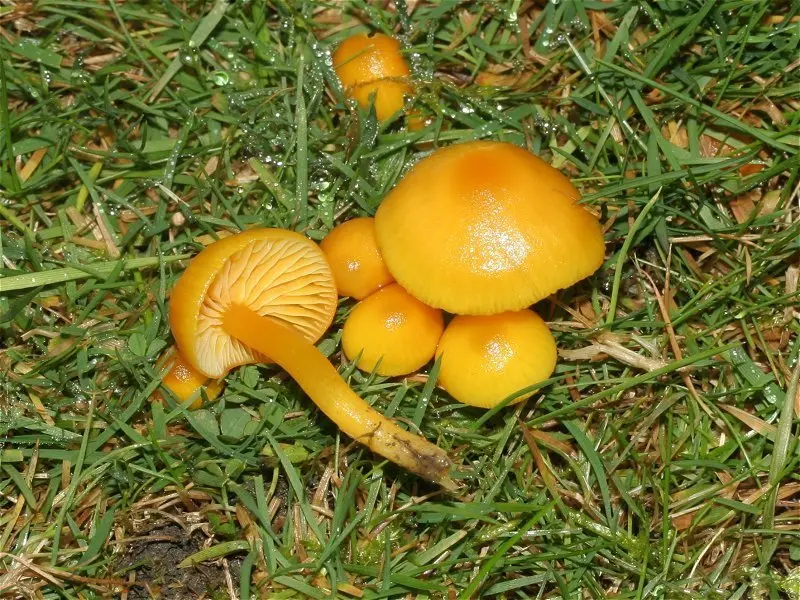Hygrocybe Wax (Hygrocybe ceracea)
- Division: Basidiomycota (Basidiomycetes)
- Subdivision: Agaricomycotina (Agaricomycetes)
- Class: Agaricomycetes (Agaricomycetes)
- Subclass: Agaricomycetidae (Agaricomycetes)
- Order: Agaricales (Agaric or Lamellar)
- Family: Hygrophoraceae (Hygrophoraceae)
- Genus: Hygrocybe
- Type: Hygrocybe ceracea (Hygrocybe Wax)

Widespread in North America and Europe. Usually grows alone. May also be found in small groups. Prefers moss soil on the ground, in forests and meadows.
head mushroom has a diameter of 1-4 cm. Young mushrooms have a convex cap. In the process of growth, it opens and becomes flat-convex. In the center, a small depression may thus form. The color of the mushroom cap is orange-yellow. A mature mushroom may acquire a light yellow color. The structure is smooth, may have some mucus, gyrophaneous.
Pulp The fungus is yellowish in color. The structure is very brittle. Taste and smell are not pronounced.
Hymenophore lamellar mushroom. The plates are quite rare. They are attached to the stem of the fungus, or they can descend onto it. They have smooth edges. Color – white or light yellow.
Leg has a length of 2-5 cm and a thickness of 0,2-0,4 cm. The structure is rather fragile and hollow. The color may be yellow or orange-yellow. In young mushrooms, it may be slightly moist. The leg ring is missing.
spore powder mushroom is white. Spores may be ovoid or elliptical in shape. To the touch – smooth, non-amyloid. The spore size is 5,5-8×4-5 microns. Basidia have a size of 30-45×4-7 microns. They are quadruple. Pileipellis has the shape of a thin ixocutis. Necks may contain some buckles.
Hygrocybe wax is a non-edible mushroom. It is not harvested or grown. Cases of poisoning are not known, therefore, have not been studied.









